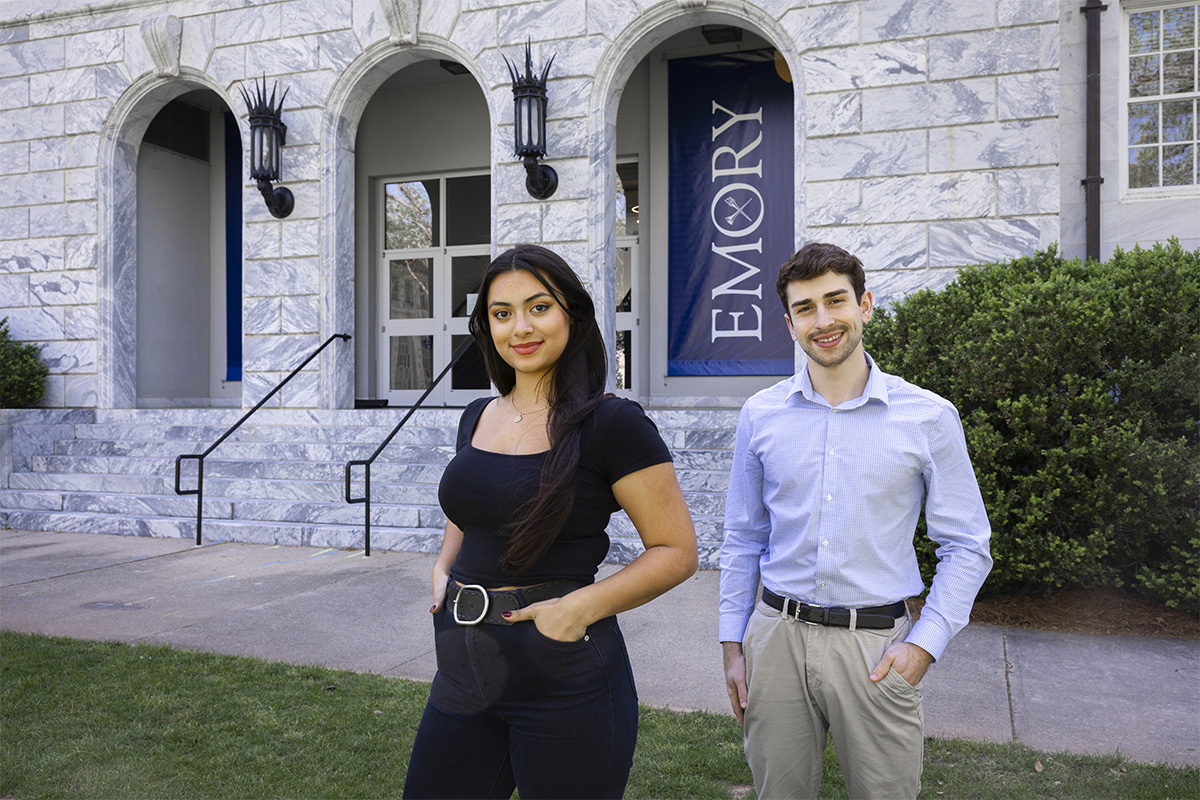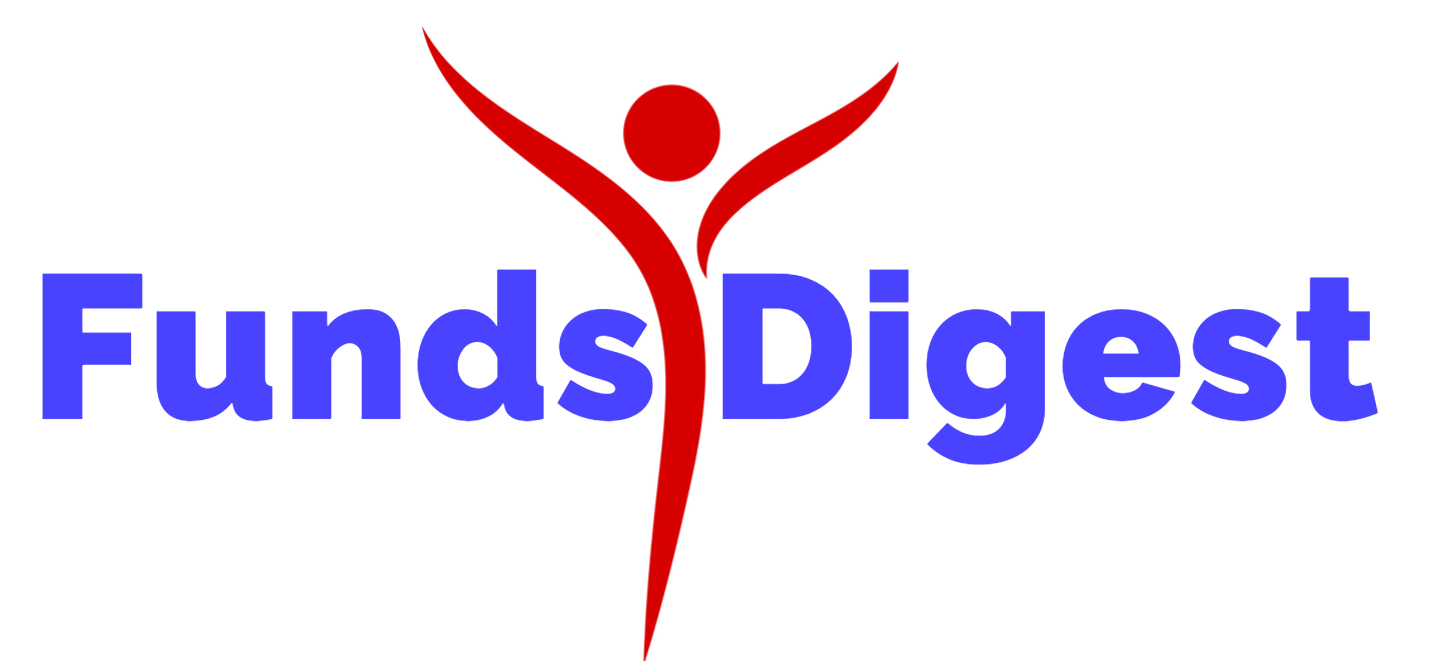
By April Hunt April 22, 2025
Emory College juniors Madeline Garcia (left) and Zachary Paikin have been named as Goldwater Scholars, the nation’s top scholarship for undergraduates studying math, natural sciences and engineering.
— Kay Hinton, Emory Photo/Video
Two exceptional juniors in Emory College of Arts and Sciences have won the 2025 Goldwater Scholarship, the nation’s top scholarship for undergraduates studying math, natural sciences and engineering.
The Goldwater Foundation selected Madeline Garcia and Zachary Paikin for the distinction, which comes with $7,500 a year toward the cost of their undergraduate degrees, from more than 5,000 outstanding applicants nationwide. They join 51 previous Emory recipients of the scholarship since its inception in 1986.
Garcia and Paikin each have conducted substantial research, with publications in leading professional journals and public scholarship, in addition to their coursework and volunteer efforts.
They represent the scientific talent needed to ensure the U.S. maintains global competitiveness, according to the U.S. Department of National Defense Education Programs, which partners with the Goldwater Foundation for the award.
“Madeline and Zachary are tremendous students,” says Emory College Dean Barbara Krauthamer. “I am inspired by their accomplishments and dedication to make a difference in the world.”
Garcia had her eyes on the engineering dual degree with Georgia Institute of Technology when she arrived at Emory from her hometown outside Kansas City, Kansas.
Taking both physics and chemistry courses fall semester of her first year was supposed to help her decide on a major to support that intensive program. Instead, the courses inspired an interdisciplinary pursuit of science that expanded upon her introduction to biophysics.
By sophomore year, she was working on physical modeling and properties of biomolecular structures in the lab of assistant chemistry professor Katherine Davis.
“I very much embraced the ‘college is your time to try everything’ spirit, and I found an almost perfect fit,” says Garcia, now a double major in biophysics and chemistry.
Garcia first worked with doctoral student Lidia Waidmann on a project applying X-ray crystallography to determine the structure of a genetically encoded biosensor, enabling a deeper understanding of its function at a molecular level. In her second project, she used computational methods to differentiate proposed mechanistic pathways of an inorganic cobalt-catalyst. She is now working on her first independent project: designing and building a Raman spectroscopy set-up for the lab. The work requires knowledge of optics, physics and engineering but offers the potential to experimentally validate mechanistic hypotheses for both biological and nonbiological catalysts, including those she studied computationally.
“It is a monumental task, but Maddie is not intimidated by the work,” says Davis, a trained physicist who works across scientific disciplines. “The worst she can do is not get it working, but she will learn a whole heck of a lot along the way.”
Once functional, the set-up will allow the lab to gain new insights into diverse chemical systems, such as enzymes that can catalyze complex reactions that scientists struggle to recreate synthetically and are relevant for industrial uses, including production of antibiotics.
That potential for real-world solutions motivates Garcia’s research and overlaps with her other activities. She joined Science.Art.Wonder her first year, most notably creating a mixed-media art installation at the Schwartz Center to spread awareness of Alzheimer’s research conducted at Emory’s Nell Hodgson Woodruff School of Nursing.
She also helped revive the Emory Astronomy Club, where she is incoming president, and serves as a vice president with Gamma Phi Beta sorority, whose previous executive board include physics majors now pursuing PhDs across the field.
Garcia will work on her spectroscopy project this summer while deciding on where she might pursue her own doctoral degree in biophysics. Her eventual goal is a research career in a national lab, focused on biophysical applications to human health.
“I feel like physics is how everything works in the world, and when you use it to figure out more about biochemistry, you can develop applications that are immediately effective in people’s lives.” Garcia says.
“The prospect of pursuing a PhD is quite daunting,” she adds. “Winning the Goldwater feels like an affirmation that I am ready for it.”
Paikin enrolled in a chemistry course fall of his first year with some worry. He hadn’t studied the field, required for his pre-med major in biology, since his second year of high school in northern Virginia.
He found that chemistry’s integrated curriculum — focused on concepts instead of separate subareas of the discipline such as organic or inorganic — spoke to his interest in solving puzzles. He declared his chemistry major just before the department named him Outstanding First-Year that spring and instilled the confidence for him to join a research lab that summer.
“I realized I wanted to get involved in research because I liked the problem-solving aspect of class, and being in a lab would take that to the next level, to solve real-world problems,” says Paikin, who has worked in professor Monika Raj’s bioorganic chemistry lab since and plans to pursue a joint MD-PhD.
He sought out Raj’s lab in part because the work aligns with his plans for medical school but also because she allows undergraduate students to pursue their own projects.
While taking physics courses that first summer, Paikin developed two successful projects. His first innovation led to the development of a reaction that allows researchers to synthesize antibody drug conjugates, targeted cancer therapies that minimize harm to healthy cells.
In his second project, he developed a novel method to make a heterocyclic ring on peptides and discovered it could function as a light-triggered drug-delivery system.
Paikin has conducted several similar projects since, always starting with new chemical reactions that he eventually applies to proteins and cells. He is the first or co-author on seven papers, including publications in the Journal of the American Chemical Society, Nature and Synlett.
“Zach’s reactions work because he never gives up,” says Raj, noting that he often tests hundreds of reactions on each project, while constantly reading related literature.
“He is doing research because he really wants to develop new therapies,” she adds. “He will be the perfect combination, a doctor who will do everything to achieve his goal to make his own treatments.”
Paikin’s latest project builds on his understanding of how different chemicals impact proteins in our body. Specifically, he is researching toxicity from toluene — the sweet-smelling hydrocarbon behind “glue sniffing” abuse — and the mechanism that may be responsible for its addictive properties and subsequent brain damage.
When not logging hours in the lab, he continues to work as a volunteer and recruiter of health care professionals with Remote Area Medical, which provides free pop-up health care clinics in underserved communities across the southeast. He also works on advocacy programs for the group.
Paikin also sharpens his writing skills as editor of the Emory Undergraduate Medical Review, where he launched a mentorship program with local high school students, and through a second major in classical civilization, studying ancient history and literature.
“Winning the Goldwater is a driver to pursue research seriously,” Paikin says. “But the fact that Dr. Raj lets undergrads reach their full potential is what allowed me to succeed. Being able to bounce ideas off of her and then execute them in the lab was really a recipe for me to pursue what I am passionate about.”
Students interested in learning more about the Goldwater Scholarship and other prestigious awards should contact Megan Friddle in Emory’s National Scholarships and Fellowships Program, now part of the Pathways Center.
Find more information or schedule an appointment through the National Scholarships and Fellowships Program website.
By downloading Emory news media, you agree to the following terms of use:
By exercising the Licensed Rights (defined below), You accept and agree to be bound by the terms and conditions of this Creative Commons Attribution-NoDerivatives 4.0 International Public License (“Public License”). To the extent this Public License may be interpreted as a contract, You are granted the Licensed Rights in consideration of Your acceptance of these terms and conditions, and the Licensor grants You such rights in consideration of benefits the Licensor receives from making the Licensed Material available under these terms and conditions.
Section 1 – Definitions.
Section 2 – Scope.
Other rights.
Section 3 – License Conditions.
Your exercise of the Licensed Rights is expressly made subject to the following conditions.
Attribution.
If You Share the Licensed Material, You must:
Section 4 – Sui Generis Database Rights.
Where the Licensed Rights include Sui Generis Database Rights that apply to Your use of the Licensed Material:
Section 5 – Disclaimer of Warranties and Limitation of Liability.
Section 6 – Term and Termination.
Where Your right to use the Licensed Material has terminated under Section 6(a), it reinstates:
Section 7 – Other Terms and Conditions.
Section 8 – Interpretation.
Creative Commons is not a party to its public licenses. Notwithstanding, Creative Commons may elect to apply one of its public licenses to material it publishes and in those instances will be considered the “Licensor.” The text of the Creative Commons public licenses is dedicated to the public domain under the CC0 Public Domain Dedication. Except for the limited purpose of indicating that material is shared under a Creative Commons public license or as otherwise permitted by the Creative Commons policies published at creativecommons.org/policies, Creative Commons does not authorize the use of the trademark “Creative Commons” or any other trademark or logo of Creative Commons without its prior written consent including, without limitation, in connection with any unauthorized modifications to any of its public licenses or any other arrangements, understandings, or agreements concerning use of licensed material. For the avoidance of doubt, this paragraph does not form part of the public licenses.

Recent Comments